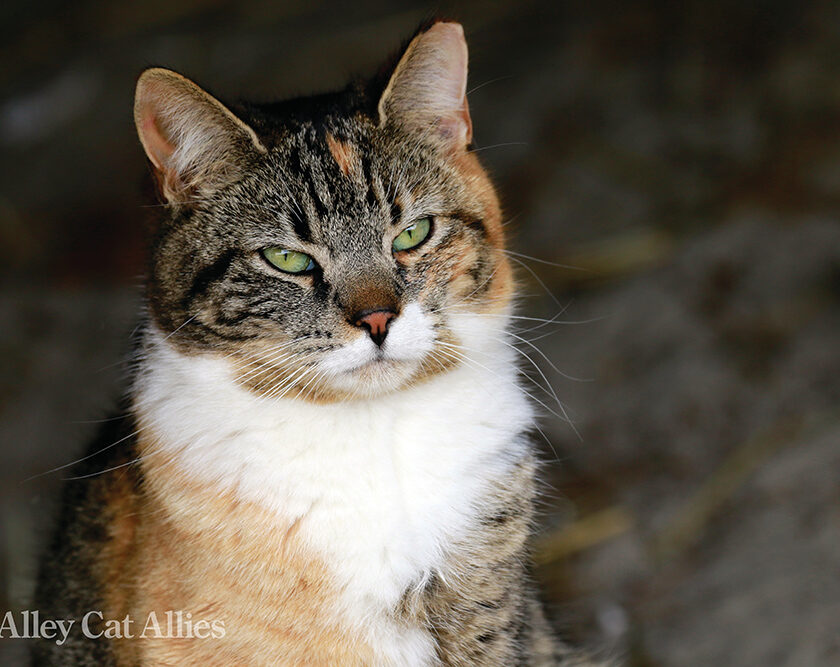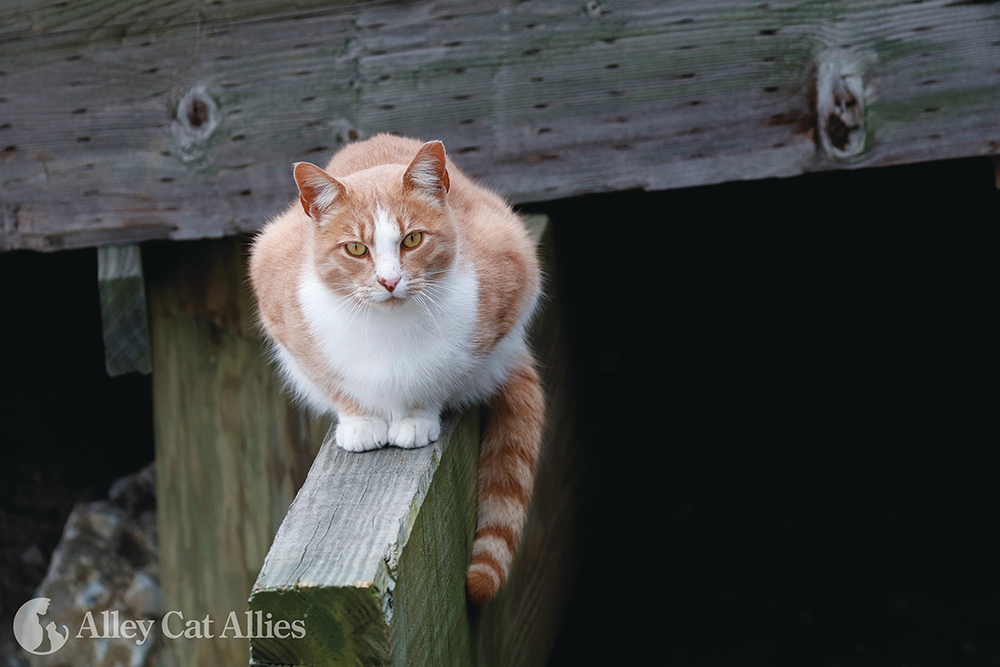By William Sokolic
Mikey, along with almost two dozen of his closest friends, lives in a beachfront property in the literal sense. The area around the Atlantic City Boardwalk is his to dine, explore, and sleep.
Mikey is one of a decreasing number of feral cats who call the Atlantic City Boardwalk home. However, prior to 2000, several hundred lived in the area of the famed wooden way. Volunteers fed them and brought them water. When they could, they also got the cats vaccinated, neutered and returned — or found them adopted homes.
Unfortunately, the neutering part was not successful enough to stem the birth rate. Veterinary services for community cats, including spaying and neutering, were hard to come by in those days. The caregivers were seeking help and finding little. More often than not, a call to animal control led to cats being trapped and killed. Newborns were left to perish.
That changed when the Alley Cat Allies entered the picture. Dubbing it the Boardwalk Cats Project, the Allies had a far more successful approach, cutting the birth rate of feral cats to zero. “The Trap-Neuter-Return (TNR) model we use prevents the community cats on the Boardwalk from being trapped, removed from their outdoor home, and killed,” Coryn Julien, the communications director of Alley Cat Allies, says.
The organization’s first objective was to mobilize the community to end the killing. “After a successful meeting with the city’s health department director, Ron Cash, we formed the Cat Action Team (C.A.T.) with the director and his staff, the Humane Society of Atlantic County, and the caregivers and advocates,” the Alley Cat website says.
In Atlantic City, grassroots organizing proved instrumental in adopting a new policy that banned animal control from rounding up and impounding the cats.
The result? The cat population got expert care and grew old without making new kitties. Alley Cat Allies monitor the cats daily, ensuring they have food, water, shelter, and veterinary care when needed.
The team worked with the Department of Public Works, which helped “develop the high standards we wanted for the cats. We educated the public about the benefits of TNR and the facts about community cats who live and thrive outdoors.”
Many of the cats have lived into their 20s. They pass away from natural causes, which has reduced the population to 24.

For the Alley Cat Allies, Atlantic City offered an international showcase for success, the website says.
“The cats who call the boardwalk their outdoor home are little celebrities in their community who are enjoying healthy lives and aging gracefully,” Julien says. “Cats are beloved by visitors and Atlantic City residents alike. They stand as a symbol of the effectiveness of humane, nonlethal management of community cats who live outdoors.”
“The cats have also been ear tipped on their left ear: the universal sign that a cat has been through a TNR program,” Julien explains.
If you think that the Alley Cat Allies are putting themselves out of business, well, they are. And they couldn’t be happier.
“TNR is the only humane, effective approach to community cats,” Julien says. It addresses the population of cats who live outdoors, reduces shelter intake and killing, and reduces calls to animal services, all saving taxpayer dollars.
No kittens have been born on the Atlantic City Boardwalk in years, and the remaining cats are living long lives where they belong: in their outdoor homes. A third were adopted.
Atlantic City is not alone in its use of the TNR approach. “Thousands of communities in the U.S. conduct TNR programs, either through official policies or local, grassroots, volunteer-led efforts. Community cats live throughout New Jersey, the U.S. and the world over, in big cities and rural towns, and every conceivable environment,” Julien says.
This is what the project has envisioned since the beginning. “The cats have been allowed to live out their lives naturally, and the program has proven to work as a means of managing this population of cats. It became a model for other cities who may have considered lethal or other inhumane methods.”
The Boardwalk Cats Project illustrates why every community should have its own TNR program.
The Boardwalk Cats are beloved members of the Atlantic City community. They delight residents and tourists alike and even make regular visits to local businesses, Julien says.
“Many other shore towns utilize TNR for community cat population control as it’s the only effective strategy readily available that is proven to be successful at reducing and eliminating community cat populations over time,” says Sandra Obi, TNR Director for the Animal Protection League of New Jersey’s Community Cat network. “The network connects feral cat caregivers all across New Jersey. If you are in any way involved in Trap-Neuter-and-Return, join our program to obtain help, connect with others in your area.”
Consider the borough of Sea Bright in Monmouth County for one example. Monmouth County SPCA also got involved, Obi says.
APLNJ’s Community Cat network connects feral cat caregivers all across New Jersey. If you are in any way involved in Trap-Neuter-and-Return (TNR), join our program to obtain help, connect with others in your area, find out about free cat food opportunities, be eligible for spay/neuter subsidy and more, she says.
Many other shore towns do utilize TNR for community cat population control as it’s the only effective strategy readily available that is proven to be successful at reducing and eliminating community cat populations over time. There are so many variations depending on available resources that are still wonderfully successful programs. If you are just focusing on specifically shore colonies, you could chat with Monmouth County SPCA as they cover many shore towns.
In the event that kittens are born to a colony cat, the caregiver shall take reasonable steps likely to result in the removal of the kittens from the colony after they have been weaned and the placement of the kittens in homes or foster homes for subsequent permanent placement.
Because of TNR:
Many of the cats are living long lives. The oldest is 20 years old.
No kittens have been born on the Boardwalk in years.
The cats are relaxed, are in excellent health, and the population is much smaller.
The cats receive the food, shelter, and medical care they need.
People in the nearby Atlantic City neighborhoods live happily alongside the community cats.
Without the Boardwalk Cats Project, many of these beloved cats would have been caught, brought to animal shelters, and killed.
William Sokolic is a veteran journalist who has written for daily, weekly and monthly publications. He’s covered a wide range of news, features and entertainment stories. Much of his work concerns tourism, Atlantic City, and the gaming industry.










